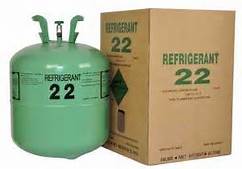R-22 Refrigerant Price
 The cost of R-22 has sky-rocketed while availability has dropped.
The cost of R-22 has sky-rocketed while availability has dropped.
History
Up until 2010, R-22 was the industry-standard refrigerant for residential and commercial air conditioning systems. If you have an air conditioner that was produced before 2010, there is a 99.5% chance that it uses R-22 freon.
About 25 years ago, the EPA ordered the phase-out of R-22 refrigerant as part of the international treaty on protecting the ozone layer called the “Montreal Protocol,” because of the refrigerant’s ozone-depleting substances.
As part of the agreement, production ended in 2010 for new air conditioning units “charged” with R-22 and production of the refrigerant itself was reduced by 75 percent. As of 2015, R-22 production has dropped by 90 percent. By 2020, it will no longer be produced at all.
Current Situation
Last winter, GHAC, Inc. purchased a large quantity of R-22 at a lower cost which allowed us to keep our customer prices lower than many other HVAC companies. Unfortunately, that stockpile has run-out and it is now very expensive and difficult to purchase new supplies of R-22.
Limited Availability
Where we used to be able to buy large quantities of R-22 (40 tanks at a time), most suppliers are now limited regarding how many tanks they are allowed to sell. It is also not uncommon for supply houses to completely run-out of R-22 stock during peak times.
Increased Cost
Reduced production and limited availability naturally results in higher cost. A typical residential air conditioner holds 10 pounds of refrigerant. At GHAC, Inc. our current cost to install 10 pounds of R-22 freon (including labor to install and no tax) is $488.
While this cost is much higher than normal, it is not uncommon to see R-22 cost of over $100 per pound throughout the industry.
Options
Even though very expensive, R-22 is currently (as of May 2017) still available. However, we agree with industry experts that the best option for customers with older units facing expensive R-22 repairs is to consider upgrading to a new systems using non-ozone-depleting R410A refrigerant.
- There are currently no restrictions on R410A.
- Systems that use R410A are generally much more efficient than older R-22 systems.
- New systems generally have outstanding warranties and better performance.
There are several alternative refrigerants available on the market today, but there are three issues that keep us from recommending undertaking a retrofit at this time:
- All R-22 replacement refrigerants require a complete system evacuation/re-charge.
- All R-22 replacements result in a reduction of cooling capacity (the amount of reduction depends on many factors).
- There is still no "one" accepted alternate refrigerant.

